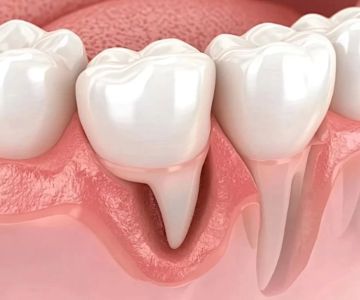Tooth Decay and the Importance of Early Detection: A Guide to Protecting Your Smile
- 1. What is Tooth Decay?
- 2. The Importance of Early Detection
- 3. Recognizing the Signs of Tooth Decay
- 4. How to Prevent Tooth Decay
- 5. Conclusion: Your Path to a Healthier Smile
1. What is Tooth Decay?
Tooth decay, also known as dental caries, is one of the most common dental problems that can affect anyone, regardless of age. It occurs when the enamel on your teeth wears down due to the acids produced by bacteria that feed on sugars and starches in your food. Over time, this decay can lead to cavities, which if left untreated, can cause tooth pain, infection, and even tooth loss.
Understanding the causes of tooth decay is crucial for preventing it. It’s a result of a buildup of plaque—a sticky film of bacteria that forms on your teeth. Plaque feeds on sugars from food and drinks, releasing acids that erode the enamel. The longer plaque stays on your teeth, the more damage it can cause.
2. The Importance of Early Detection
Early detection of tooth decay is essential for effective treatment and prevention of more serious dental issues. The earlier you detect decay, the easier and less expensive it is to treat. Regular dental checkups and self-awareness of your oral health can make all the difference in preventing irreversible damage to your teeth.
One of the main reasons early detection is so important is that tooth decay often starts as a small spot on the tooth enamel. If caught in the early stages, a dentist can help remineralize the enamel and prevent the decay from progressing. However, if left untreated, decay can reach the inner layers of the tooth, causing more extensive damage, requiring fillings, root canals, or even tooth extraction.
3. Recognizing the Signs of Tooth Decay
Recognizing the early signs of tooth decay is vital in ensuring you catch it before it becomes severe. Some early signs of tooth decay include:
- Tooth sensitivity to hot or cold foods and beverages
- Pain while chewing or biting
- Visible holes or pits in your teeth
- Discoloration of your teeth, such as brown or black spots
- Bad breath or an unpleasant taste in the mouth
If you notice any of these symptoms, it’s crucial to consult with a dentist for a thorough examination. Early treatment can help preserve your natural tooth and avoid more invasive procedures down the road.
4. How to Prevent Tooth Decay
Prevention is always better than treatment. Here are some tips for keeping your teeth healthy and preventing tooth decay:
- Brush your teeth at least twice a day with fluoride toothpaste.
- Floss daily to remove food particles and plaque from between your teeth.
- Limit sugary snacks and drinks that fuel tooth decay-causing bacteria.
- Visit your dentist regularly for checkups and professional cleanings.
- Use mouthwash to help reduce plaque buildup and freshen your breath.
By following these simple steps, you can significantly reduce the risk of tooth decay and maintain a bright, healthy smile for years to come.
5. Conclusion: Your Path to a Healthier Smile
Tooth decay is a preventable issue, and with early detection, it can be treated before it leads to more significant dental problems. Regular dental visits, good oral hygiene practices, and awareness of the signs of tooth decay can help you maintain healthy teeth throughout your life. Don't wait for a cavity to develop—take action now to protect your smile!
Remember, the earlier you detect tooth decay, the easier and less expensive it is to treat. So, start today by practicing good oral care and scheduling a visit to your dentist. With a little attention and care, you can ensure that your teeth remain healthy for years to come.







 Westgate Dental Arts
Westgate Dental Arts Coventry Family Dental
Coventry Family Dental Familia Dental
Familia Dental Dr. Daniel S. Fife, DDS
Dr. Daniel S. Fife, DDS Dentistry At Suburban Square: Michael I. Wollock, DMD
Dentistry At Suburban Square: Michael I. Wollock, DMD Comfort Care Dental
Comfort Care Dental The Importance of Oral Health Education During Pregnancy for a Healthy Pregnancy
The Importance of Oral Health Education During Pregnancy for a Healthy Pregnancy Why Skipping Dental Checkups Can Lead to Bigger Oral Health Problems
Why Skipping Dental Checkups Can Lead to Bigger Oral Health Problems Advantages of Porcelain Dental Restorations
Advantages of Porcelain Dental Restorations Best Tips for Brushing Your Teeth Properly for Healthy Gums: Essential Techniques for Oral Health
Best Tips for Brushing Your Teeth Properly for Healthy Gums: Essential Techniques for Oral Health How Can Diabetes Cause Tooth and Gum Problems? Preventing and Managing Oral Health Issues
How Can Diabetes Cause Tooth and Gum Problems? Preventing and Managing Oral Health Issues Healthy Habits for Promoting Good Oral Health and Hygiene: Tips for a Healthy Smile
Healthy Habits for Promoting Good Oral Health and Hygiene: Tips for a Healthy Smile